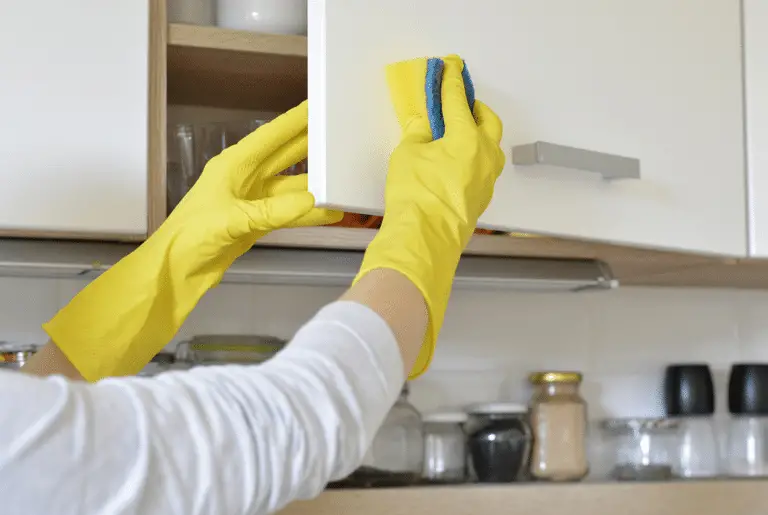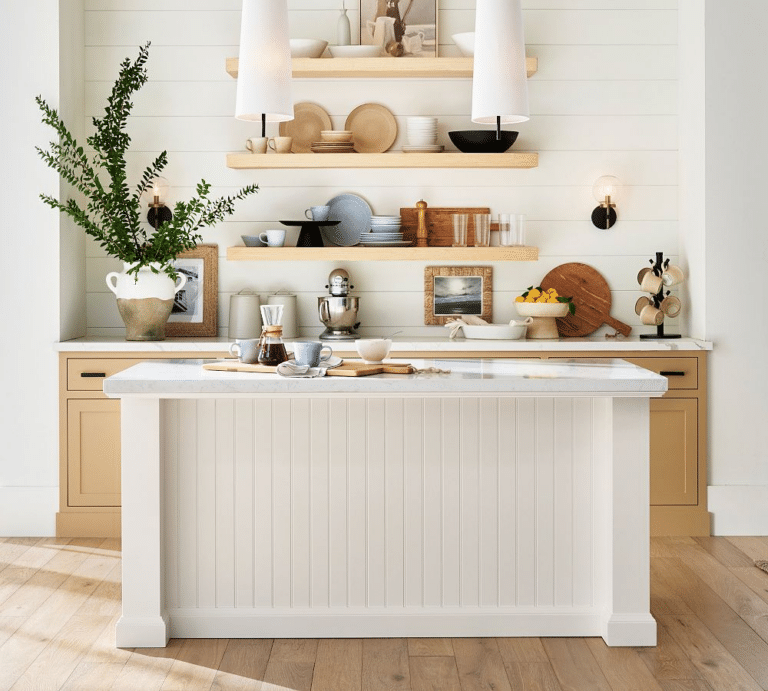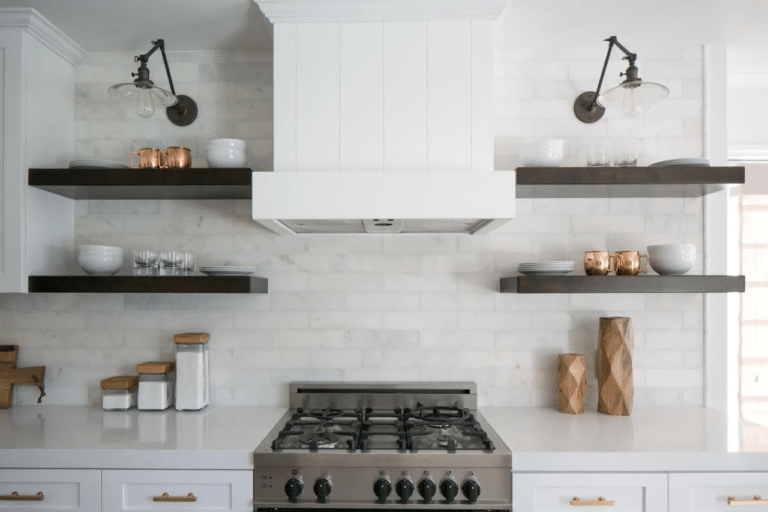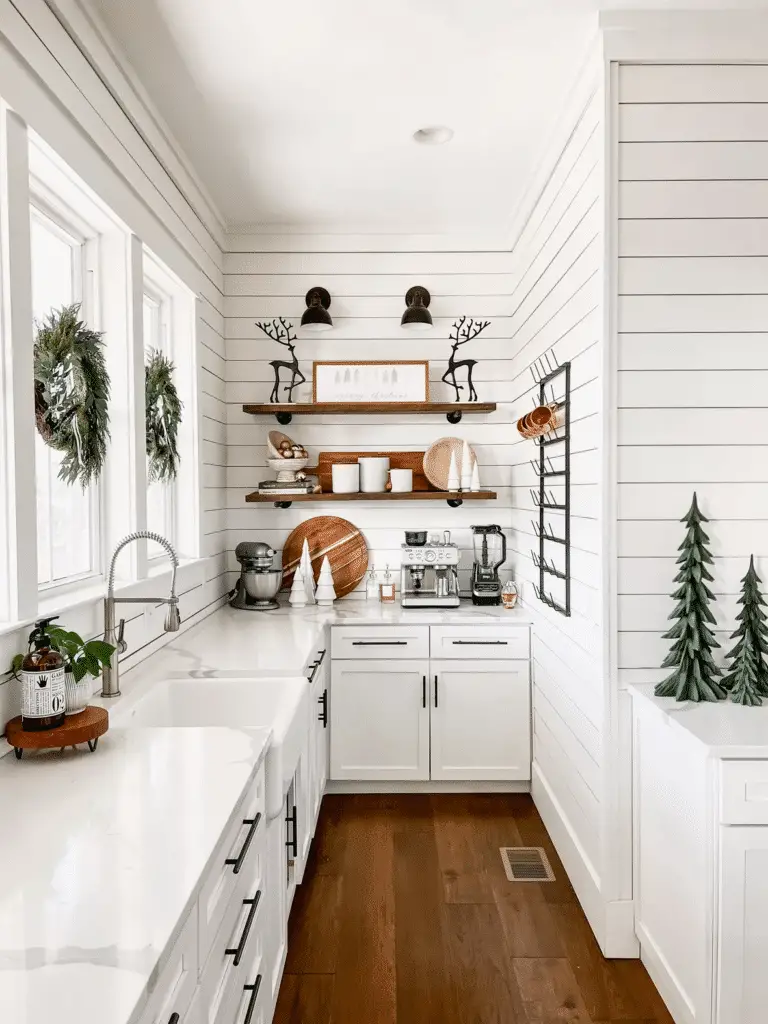Hey there! Have you ever considered the importance of having an outdoor kitchen backsplash? Not only does it add to the aesthetic appeal of your outdoor space, but it also provides essential protection against environmental elements.
In this blog post, we will dive into the different types of outdoor kitchen backsplashes and their specific maintenance needs, as well as provide you with a step-by-step guide on how to keep them clean. Plus, we’ll share preventive measures to prolong your backsplash’s lifespan and tips on when it’s time for a replacement. So, grab a cup of coffee and let’s get into it!
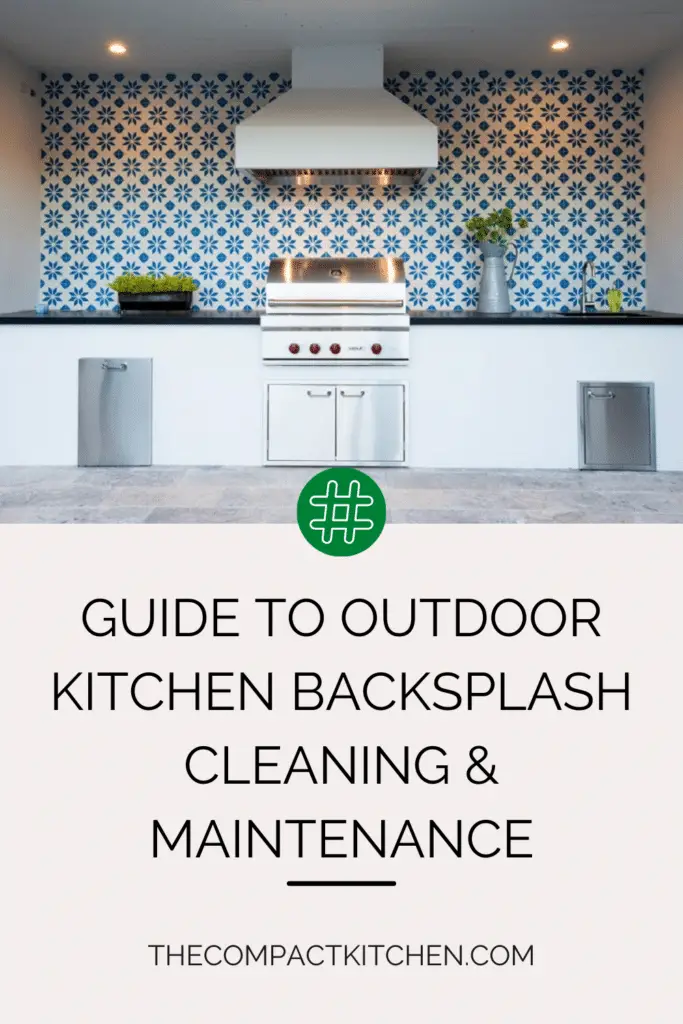
Introduction to Outdoor Kitchen Backsplashes
When it comes to designing an outdoor kitchen, one feature that cannot be overlooked is the backsplash. Not only does it add to the aesthetic appeal of the space, but it also serves a crucial function of protecting the walls from splashes, stains, and other debris while cooking. However, due to its exposure to various environmental elements such as sun, rain, and wind, outdoor kitchen backsplashes require regular cleaning and maintenance to ensure they remain in top condition.

Outdoor kitchen backsplashes come in a variety of materials, styles, and designs, offering homeowners the flexibility to choose a backsplash that suits their personal taste and complements the overall outdoor kitchen décor. But regardless of the type of backsplash chosen, proper care and maintenance are essential to extend its lifespan and preserve its appearance.
Different Types of Outdoor Kitchen Backsplashes and Their Maintenance Needs
One of the key factors to consider when selecting an outdoor kitchen backsplash is the material it is made of. Common materials for outdoor kitchen backsplashes include stainless steel, glass, and ceramic, each with its own set of cleaning and maintenance requirements.

Stainless steel backsplashes are durable and easy to clean but may require regular polishing to maintain their shine. Glass backsplashes, on the other hand, are sleek and modern but may be prone to fingerprints and streaks. Ceramic backsplashes offer endless design options but may be more susceptible to chipping and cracking.

To ensure your outdoor kitchen backsplash remains in optimal condition, it is crucial to follow the specific cleaning and maintenance guidelines for the material you have chosen. Regularly cleaning the backsplash with mild soap and water, avoiding abrasive cleaners that can damage the surface, and promptly addressing any stains or spills are key steps in preserving the appearance and integrity of your outdoor kitchen backsplash.
Step-by-Step Guide to Cleaning Outdoor Kitchen Backsplashes
Proper cleaning of outdoor kitchen backsplashes involves more than just wiping down the surface with a damp cloth. Depending on the material of your backsplash, you may need to use specific cleaning products or techniques to remove tough stains or build-up. For stainless steel backsplashes, a mixture of water and vinegar can be effective in removing grease and grime. Glass backsplashes may benefit from a glass cleaner or a vinegar solution for a streak-free shine. Ceramic backsplashes can be cleaned with a mild detergent and water or a specialized ceramic cleaner.

When cleaning your outdoor kitchen backsplash, be sure to pay attention to any seams or grout lines where food particles and dirt can accumulate. Regularly inspecting and cleaning these areas can prevent mold and mildew growth and maintain the overall cleanliness of your backsplash.
Different Types of Outdoor Kitchen Backsplashes and Their Maintenance Needs

When it comes to outdoor kitchen backsplashes, there is a wide variety of materials to choose from, each with its own unique characteristics and maintenance requirements. Understanding the specific needs of different types of backsplashes is essential for ensuring their longevity and visual appeal.
Stainless Steel Backsplashes
Stainless steel backsplashes are a popular choice for outdoor kitchens due to their durability and sleek appearance. To maintain their shine and prevent rust, regular cleaning with a mild soap and water solution is recommended. Avoid using abrasive cleaners or scouring pads, as these can scratch the surface of the stainless steel.
For stubborn stains or grease buildup, a solution of vinegar and water can be used to gently scrub the backsplash. After cleaning, be sure to dry the stainless steel thoroughly to prevent water spots or mineral deposits.
Glass Backsplashes
Glass backsplashes are a stylish and modern option for outdoor kitchens, but they require special care to keep them looking their best. To clean glass backsplashes, a glass cleaner or a mixture of water and vinegar can be used to remove dirt and grease.
Be cautious when cleaning glass backsplashes, as abrasive cleaners or scrub brushes can scratch the surface. Instead, use a soft cloth or sponge to gently wipe down the glass. Regular cleaning is important to prevent buildup of grime and maintain the transparency of the glass.
Ceramic Backsplashes
Ceramic backsplashes are a timeless choice for outdoor kitchens, adding a pop of color and texture to the space. To clean ceramic backsplashes, a solution of warm water and mild detergent can be used to wipe down the tiles and grout.
For tougher stains or mildew growth, a paste of baking soda and water can be applied to the affected areas and scrubbed with a soft brush. Regularly sealing the grout lines of ceramic backsplashes can help prevent discoloration and moisture damage.
By understanding the maintenance needs of different types of outdoor kitchen backsplashes, you can ensure that your backsplash stays looking good as new for years to come. Remember to follow the specific care instructions for each material to avoid damaging the backsplash and to maintain its aesthetic appeal.
Cleaning Your Outdoor Kitchen Backsplash Like a Pro

Now that you understand the importance of having an outdoor kitchen backsplash and have learned about the different types available, it’s time to dive into the nitty-gritty of keeping it clean and well-maintained. Let’s walk through a step-by-step guide on how to effectively clean your outdoor kitchen backsplash to ensure it stays looking its best for years to come.
Gather Your Cleaning Materials
Before starting the cleaning process, make sure you have all the necessary materials at hand. Depending on the type of backsplash you have, you may need specific cleaning agents. For example, stainless steel backsplashes can be cleaned using mild detergent and water, while glass backsplashes may require a glass cleaner. Always read the manufacturer’s instructions for the best cleaning practices.
Step 1: Remove Surface Debris
Start by wiping down the surface of your outdoor kitchen backsplash with a soft cloth to remove any loose debris or food particles. This will help prevent scratching during the cleaning process and make it easier to tackle any stubborn stains.
Step 2: Clean with Gentle Cleanser
Next, apply a small amount of your chosen cleaning agent to a sponge or soft-bristled brush and gently scrub the surface of the backsplash. Avoid using abrasive materials that could scratch or damage the finish. Work in small sections, focusing on areas with visible stains or buildup.
Step 3: Rinse and Dry Thoroughly
Once you have cleaned the entire backsplash, rinse off any remaining cleaning solution with water. Use a clean, dry cloth to wipe down the surface and remove any excess moisture. Properly drying your backsplash will help prevent water spots and streaks from forming.
How Often Should You Clean Your Outdoor Kitchen Backsplash?
The frequency of cleaning your outdoor kitchen backsplash will depend on factors such as the material it is made of and how often it is used. As a general rule of thumb, aim to clean your backsplash at least once a week to remove any buildup and keep it looking fresh.
For busy outdoor kitchens that see heavy use, you may need to clean your backsplash more frequently to maintain its appearance. Pay attention to any signs of grime or stains and address them promptly to prevent them from becoming harder to remove over time.
By following these simple steps and sticking to a regular cleaning schedule, you can ensure that your outdoor kitchen backsplash remains a focal point of your outdoor cooking area. Remember, a clean backsplash not only enhances the aesthetic appeal of your outdoor kitchen but also helps in protecting it from environmental elements that could cause damage.
Preventive Measures for Prolonging the Lifespan of Your Outdoor Kitchen Backsplash

When it comes to outdoor kitchen backsplashes, prevention is key to maintaining their appearance and functionality for years to come. By taking proactive steps to protect your backsplash from common elements like moisture, heat, and dirt, you can extend its lifespan and reduce the need for frequent cleaning and repairs.
Tips on Backsplash Protection
One of the most effective ways to prevent damage to your outdoor kitchen backsplash is to apply a sealant or protective coating. This extra layer acts as a barrier against moisture and stains, making it easier to clean and maintain the backsplash over time. Depending on the material of your backsplash, you can choose from a variety of sealants that are specifically designed to enhance durability and longevity.
Another important preventive measure is to avoid placing hot objects directly on the backsplash surface. While many outdoor kitchen backsplashes are heat-resistant, prolonged exposure to extreme heat can still cause damage and discoloration. To protect your backsplash, always use trivets or hot pads under hot pots and pans to prevent direct contact with the surface.
Recommended Products for Backsplash Maintenance
In addition to sealants and heat protectors, there are specialized cleaning products available that are designed to keep your outdoor kitchen backsplash looking its best. For stainless steel backsplashes, consider using a stainless steel cleaner to remove fingerprints and water spots effectively. Glass backsplashes can benefit from a glass cleaner that helps to remove streaks and smudges without leaving residue behind.
When cleaning ceramic backsplashes, opt for a mild dish soap and water solution to remove dirt and grease without causing damage to the delicate surface. By choosing the right products for your specific backsplash material, you can maintain its appearance and functionality without the risk of deterioration or discoloration.
By following these preventive measures and using recommended products, you can protect your outdoor kitchen backsplash from damage and extend its lifespan. Taking proactive steps to prevent common issues like moisture, heat, and dirt will help you enjoy a beautiful and functional backsplash for years to come.
When to Consider a Backsplash Replacement

After years of use and exposure to the elements, your outdoor kitchen backsplash may eventually reach a point where cleaning and maintenance can no longer restore its appearance or functionality. In such cases, it may be time to consider a replacement. But how do you know when the time has come to invest in a new backsplash?
Signs Your Outdoor Kitchen Backsplash Needs Replacement
One of the most obvious signs that your outdoor kitchen backsplash needs replacement is visible damage such as cracks, chips, or discoloration that cannot be repaired. If the backsplash is no longer effectively protecting your outdoor kitchen walls from stains or moisture, it may be time for a new one.
Another indication that a replacement is necessary is when cleaning and maintenance no longer yield satisfactory results. If no matter how much you clean or care for your current backsplash, it continues to look worn out or dull, it might be best to start fresh with a new installation.
Choosing a New Backsplash
When selecting a new outdoor kitchen backsplash, there are several factors to consider to ensure you make the right choice for your space. Firstly, prioritize durability to withstand the outdoor elements and frequent use. Materials like stainless steel or porcelain tiles are known for their longevity and resistance to wear and tear.
Design is another crucial aspect when choosing a new backsplash. Make sure the style and color of the backsplash complement your outdoor kitchen’s overall aesthetic while adding a touch of personality to the space. Whether you opt for a sleek modern design or a more traditional look, the new backsplash should enhance the visual appeal of your outdoor kitchen.
Lastly, consider the ease of maintenance when selecting a new backsplash. Choose a material that is easy to clean and maintain to ensure your outdoor kitchen stays looking fresh and inviting with minimal effort. Look for materials that are resistant to stains and heat to simplify your cleaning routine.
By keeping an eye out for signs that your outdoor kitchen backsplash needs replacement and carefully considering factors like durability, design, and maintenance, you can ensure your outdoor kitchen remains a functional and stylish space for years to come.
Wrap Up Your Outdoor Kitchen Backsplash Adventure!
Congratulations on completing your crash course in outdoor kitchen backsplashes! Remember, regular cleaning and maintenance are key to keeping your backsplash looking fresh and protecting it from the elements. Whether you have stainless steel, glass, or ceramic, there’s a cleaning solution for every type.
Don’t forget to take preventive measures and know when it’s time for a replacement. With these tips, your outdoor kitchen backsplash will continue to shine for years to come. Happy cleaning!





